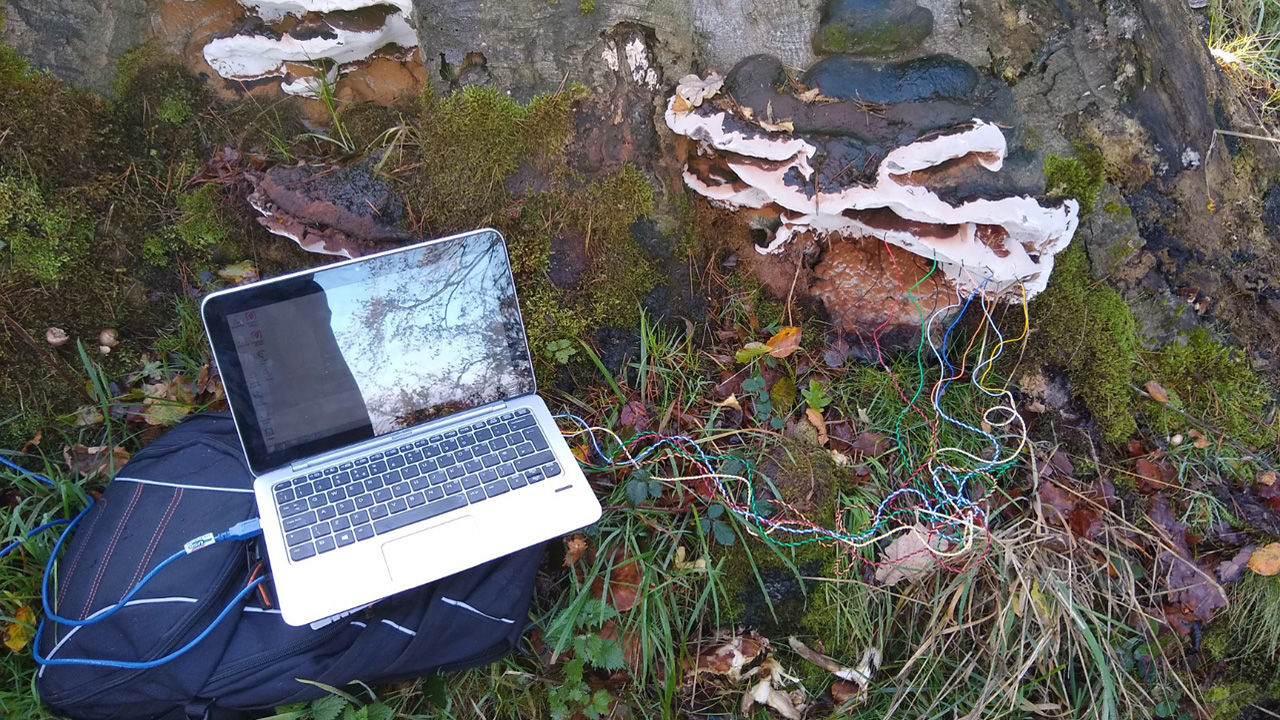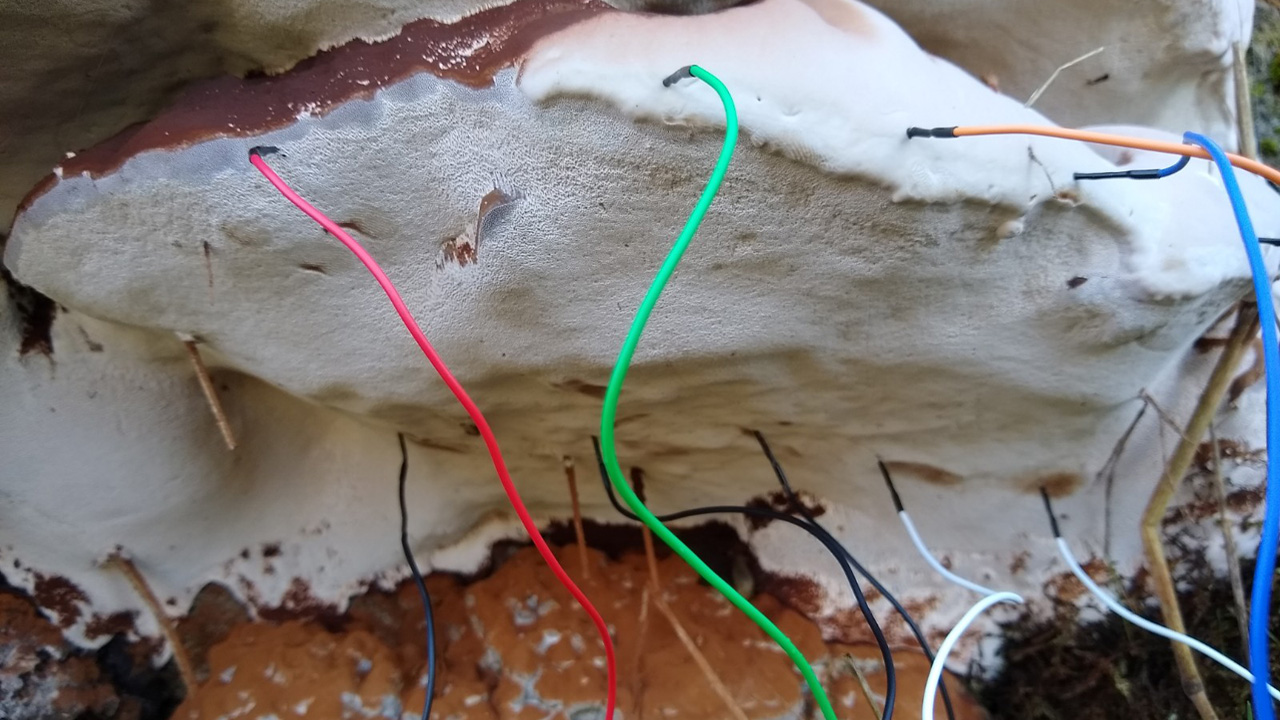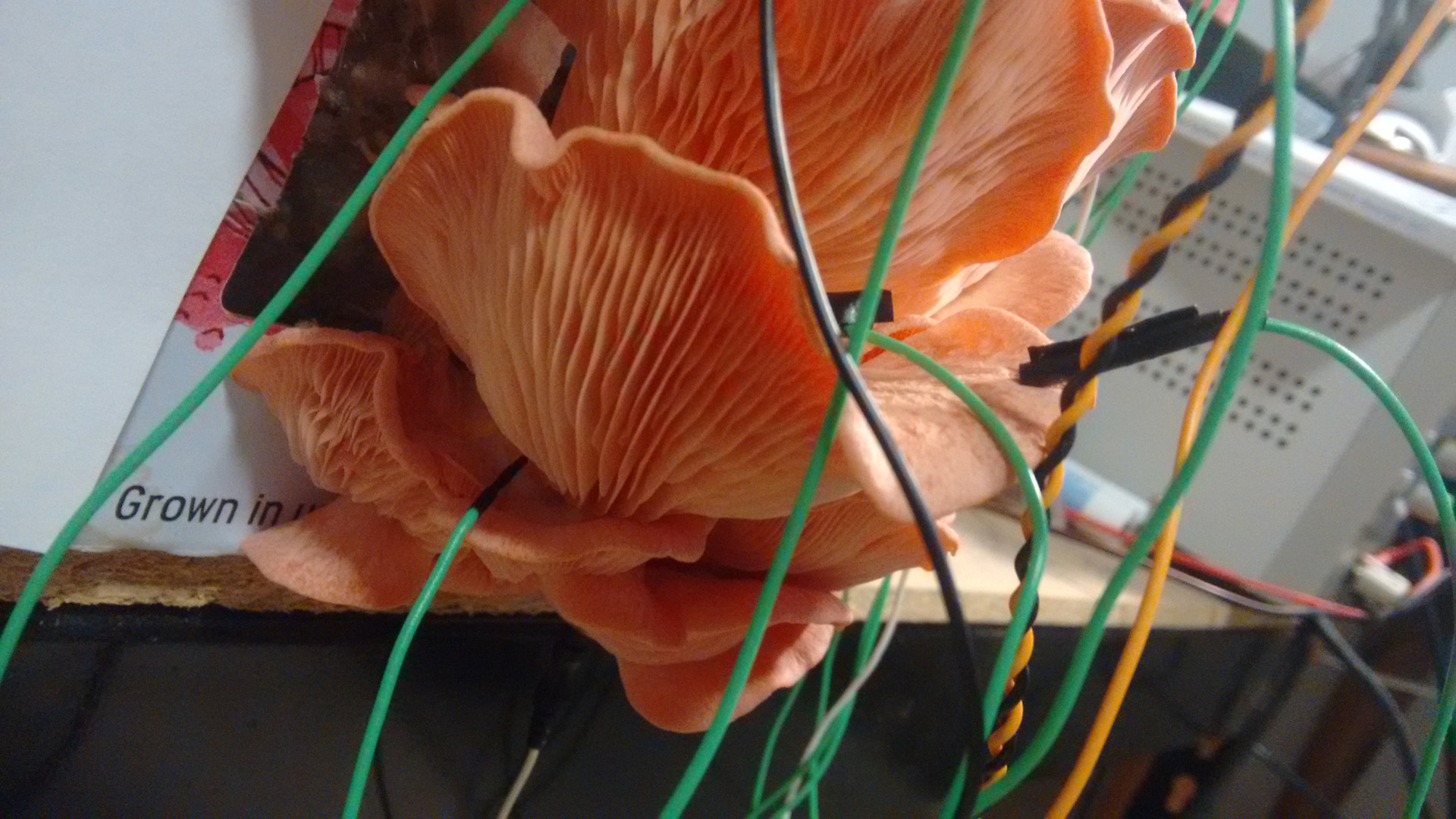Academics are making 'intelligent buildings' with the help of fungi
The Centre for Unconventional Computing is using fungal colonies in surprising ways.

The University of the West of England will teach you a degree course in anything from accountancy to ecology, but is also home to the Centre for Unconventional Computing and its professor. The single photograph that features on the centre’s website features a toilet roll, a headless skeleton, a fume cupboard, a mechanic’s toolset, oscilloscopes and, disappointingly, only two actual computers. There’s a white lab coat thrown over a chair, it’s that sort of place.
The centre was set up by Professor Andrew Adamatzky in 2001 "as a response to an urgent need to develop computers for [the] next century", and designs new computing techniques and architectures using physical, chemical, and biological media. They’re also interested in the kinds of massively parallel architectures we’re starting to see in supercomputer GPUs and the chips that are needed to run a self-driving car.
But wait, did that say biological media? As in Existenz-like flesh pods capable of playing VR games? Not quite. Among the biological media used in the centre’s experiments is the slime mould, Physarum, and the oyster mushroom, which exhibits some interesting properties. "Spikes of electrical potential propagate along mycelium networks," says Adamatzky. "When two spikes collide at a junction in the network, they can annihilate, reflect, or produce a third spike. Thus they implement Boolean logic functions. So each junction of a mycelium network is a computing element, and there are hundreds of thousands of these computing elements in one square metre of the substrate."

Let’s unpack that a little. The mycelium, despite what you may have learned from Star Trek Discovery, is the vegetative part of a fungus colony. The mushrooms we leave on the side of our plates in restaurants are the fruiting bodies, designed for reproduction. Mycelium colonies can be huge—the largest living thing on Earth is one, a honey fungus measuring 2.4 miles across in the Blue Mountains of Oregon that could be over 8,000 years old. Boolean logic functions are the logical operations—taking one or more binary inputs and giving a binary output—that we see in the transistors that make up our CPUs and all the other chips that make up a PC.
Mush-RAM
There’s rather more to it than just replacing the silicon pathways of a microchip with specially grown mycelium however. The networks have properties of their own, and Adamatzky has received European Commission funding to run them throughout a building, turning it into something that can react to its surroundings. "Fungi sense everything as humans sense, and much more," says Adamatzky. "Keep in mind that fungi were the first ever living creatures on Earth. So we all originate from fungi. The buildings made with fungi will be intelligent buildings, they will be able to sense, make decisions based on what they sense and also somewhat interact with their environment and inhabitants."
Known as FUNGAR, this means that fungi grown inside the building will act as a sensor detecting changes in light, pollutants, and temperature, and computers will analyse the information. When changes are recognised, the system will have the potential to respond by controlling connected devices such as lights and heaters.
"If successful, the building as a whole will be able to recognise lighting levels, chemicals in the environment, the presence of people, and will respond to touch," says Adamatzky. "Acting as a massively-parallel computer, the building will control devices depending on the environmental conditions. For example a warning light could be lit if high levels of air pollution were detected or inhabitants could be warned about high or low temperatures. It’s our vision for an alternative version of a smart home."
The biggest gaming news, reviews and hardware deals
Keep up to date with the most important stories and the best deals, as picked by the PC Gamer team.

But away from FUNGAR the UWE lab manages to squeeze remarkable behaviour out of simple life forms. Self-repairing smart wires, for example. Imagine you have two pins you want to bridge with an electrical connection. By placing a blob of slime mould on one, and an attractant—some food—on the other, the mould can be induced to bridge the pins with a protoplasmic tube, which can conduct electricity, and silicon oil is used to insulate it from the rest of the system. If you cut the tube its ends can merge together and restore the pathway within a few hours. By using strategically placed oat flakes—a slime mould’s favourite food—and salt or electrical fields, which it doesn’t like, you can guide the formation of a network of tubes. Then you can seed the network with nanoparticles of gold, which are left behind when the mould dies off, leaving conductive pathways that follow the mould’s route.
These are real experiments that may have real results when the three-year FUNGAR project is finished. Adamatzky came to research the electrical properties of slime moulds largely through curiosity and wanting to study, "the acquaintance of information, the recognition of stimulatory spaces, sensing, decision mapping, learning, reasoning, and showing emotional states in chemical and physical substrates, and living creatures without a nervous system."
And as Adamatzky wrote in the preface to the journal Advances in Unconventional Computing, "What is unconventional today will be conventional tomorrow." That was in 2016. Tomorrow is almost here.

Ian Evenden has been doing this for far too long and should know better. The first issue of PC Gamer he read was probably issue 15, though it's a bit hazy, and there's nothing he doesn't know about tweaking interrupt requests for running Syndicate. He's worked for PC Format, Maximum PC, Edge, Creative Bloq, Gamesmaster, and anyone who'll have him. In his spare time he grows vegetables of prodigious size.

